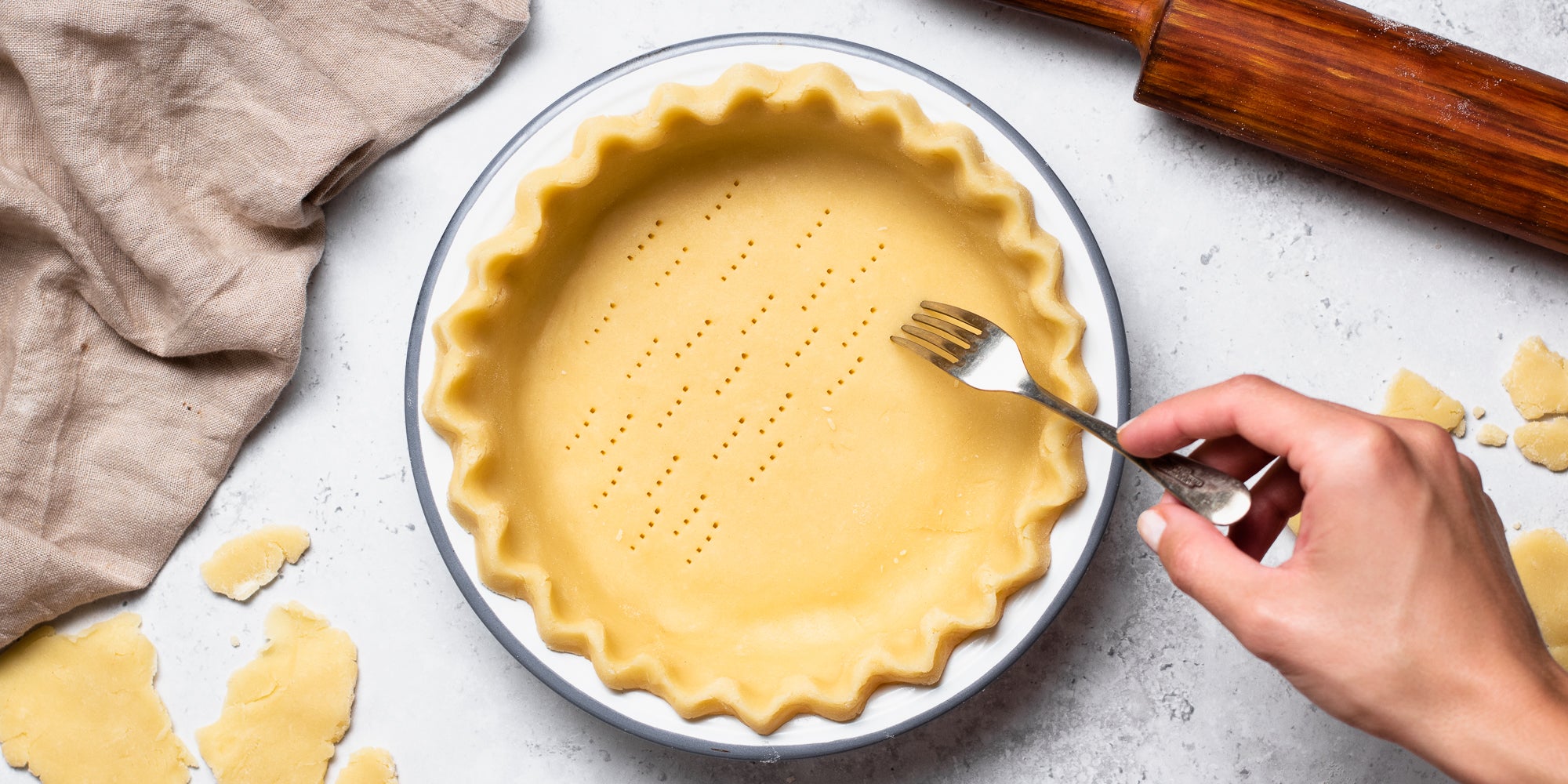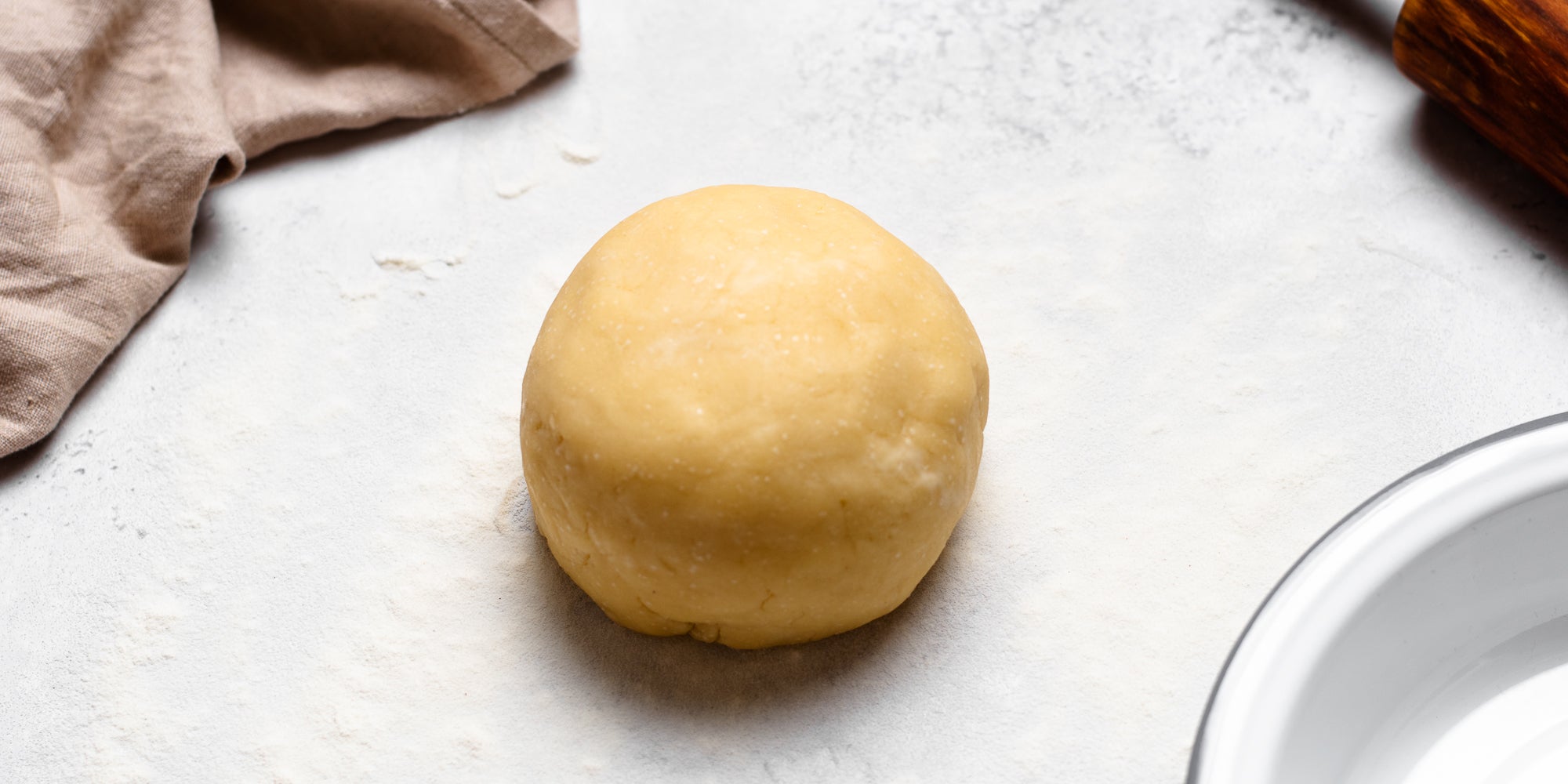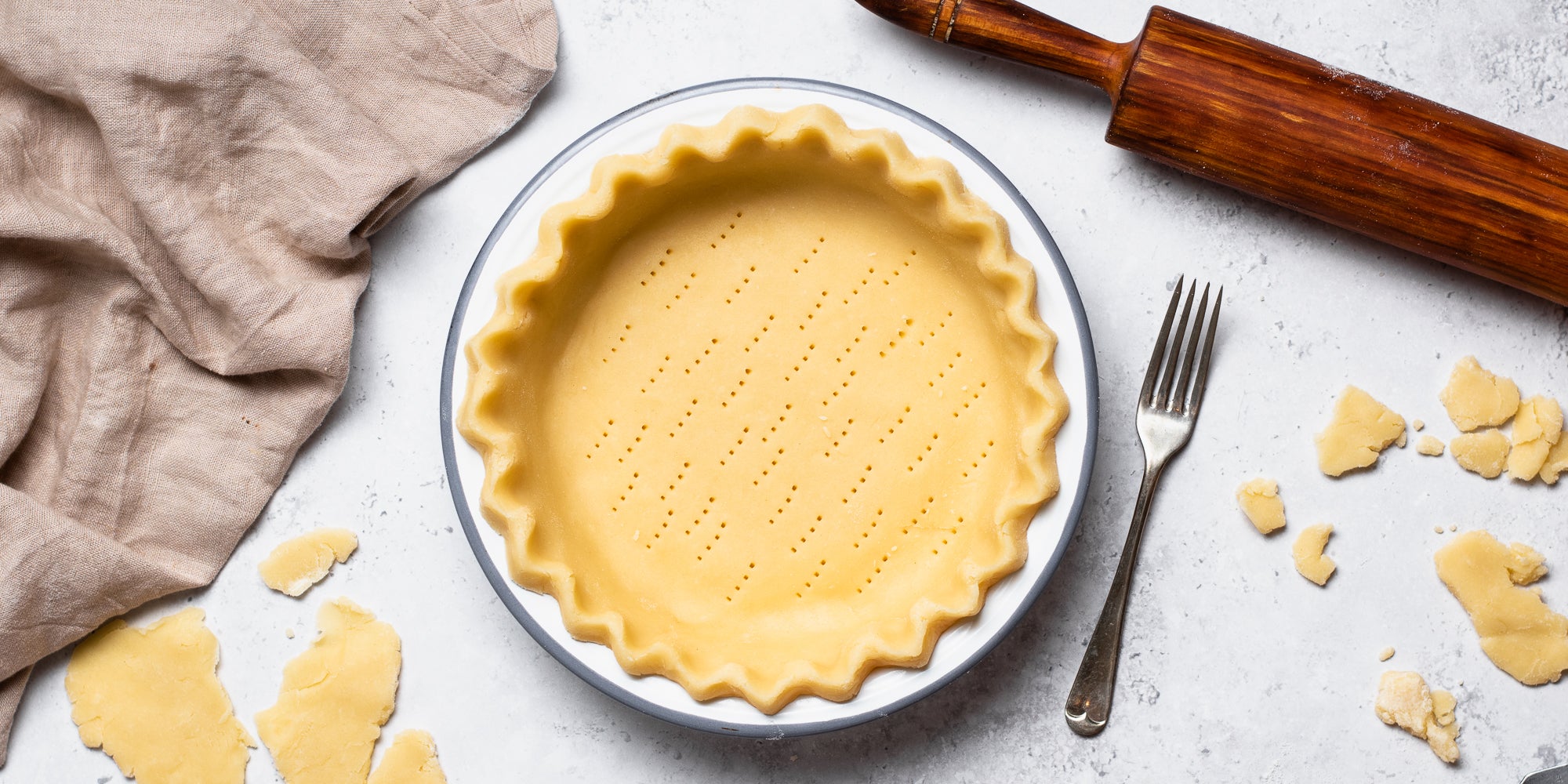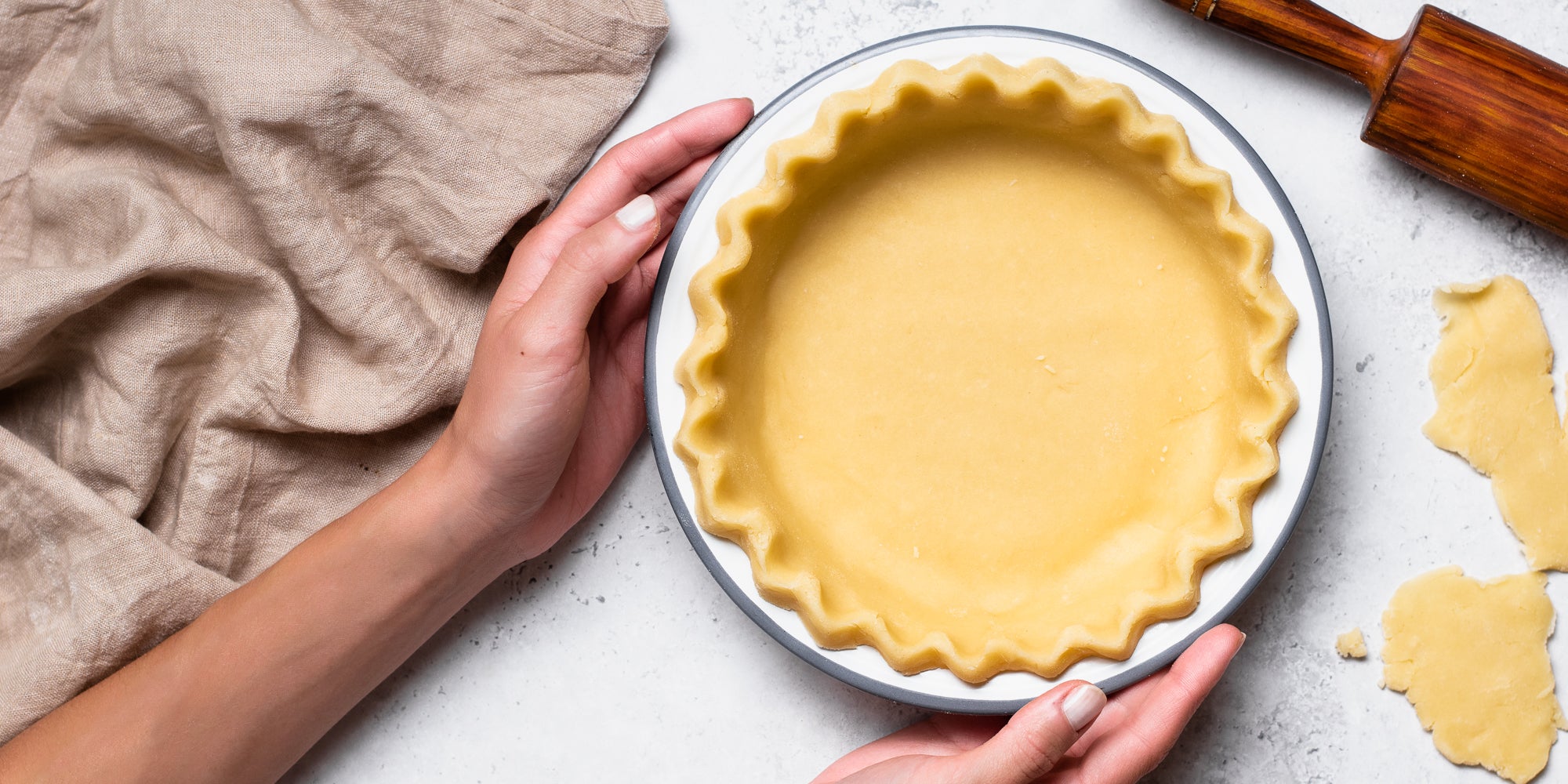About our shortcrust pastry recipe:
Our simple, easy-to-follow recipe for delicious shortcrust pastry is perfect for pastry cases, jam tarts and mince pies. It takes just 25 minutes to prep, and you can even freeze any leftovers for another day.
What's the difference between shortcrust pastry and puff pastry?
Puff pastry - the kind of pastry used for croissants and eclairs - is flaky, light, rich and buttery. Shortcrust pastry is denser and has a more crumbly, biscuit-like texture.
What's the secret to good shortcrust pastry?
When you're making your shortcrust pastry, try not to overwork it - handling it too much can make it unworkable, and may make your pastry 'tough' after baking. We'd also advise you to be careful if you're stretching it, mend any tears when you're layering it on top of toppings, and always allow it to rest.
It's also a good idea to keep everything surrounding the pastry as cool as possible - if the fat in the pastry melts during prep, it may change the final result of the end dish.
What can I use shortcrust pastry for?
Shortcrust pastry is hugely-versatile; you can use it as a base (and covering) for tarts, pies, quiches, and party nibbles. You could also use any leftover scraps for pie decorations.
Method
Step 1:
Sieve the flour and salt into a large mixing bowl, holding the sieve high above the bowl so the flour gets a good airing.
Step 2:
Cut the cold butter into small pieces then sir it into the flour using a knife.
Step 3:
Rub the fat into the flour – dip your fingertips into the flour and gently rub the little pieces of butter between the tips of your thumbs and fingers so that they flatten and gradually mix into to flour. As you do this keep lifting your hands up above the rim of the bowl as this will let air get to the flour and keep the mixture cool as you rub in.
Step 4:
Keep rubbing in as lightly as you can until you cannot see any more bits of butter and the mixture looks like coarse breadcrumbs. Try to do the rubbing in as quickly as possible as the longer you are touching the butter the hotter it will become and your mixture may become greasy and sticky. If this happens just put the bowl in the fridge for 5 minutes and then continue.
Step 5:
Sprinkle 1 tablespoon of cold water over the mixture and quickly mix it in with the knife. The pastry will start to come together in small lumps. If there are any dry bits of flour in the bottom of the bowl sprinkle over a tiny bit more water and mix again. It is very important not to add too much liquid as the pastry will be sticky and difficult to roll out, and when it is cooked the pastry will be tough and hard.
Step 6:
Use your hand to bring the pastry together in a ball, this is easiest if you use a wiping motion and wipe all the little bits up into one big ball. The dough should feel like plasticine - neither too hard and too soft.
Step 7:
Tip it out onto a floured work surface and knead it for a second or two just to bring into a smooth ball.
Step 8:
Wrap the pastry in a piece of cling film and leave to rest in the fridge for 30 minutes.
Step 9:
Take the pastry out of the fridge, unwrap it from the cling film and set it on the floured work surface.
Step 10:
Flour your hands and the rolling pin. Pat the dough down a little so the surface is flat.
Step 11:
Use the rolling pin to roll the pastry away from you in gentle strokes, pressing down with it gently as you go.
Step 12:
After every two or three strokes give the pastry a quarter turn – this will ensure you have a round of pastry rather than a long thin strip.
Step 13:
Keep rolling until the pastry is the required thickness – generally, the smaller the tin you are lining the thinner the pastry should be.
Ingredients
- 200g Allinson's plain white flour
- Pinch Salt
- 100g Unsalted butter (cubed)
- 4 tbsp Water (very cold)
- 200g Allinson's plain white flour
Utensils
- Rolling pin
Recipe Reviews
terrible
Brilliant receipe so easy and it tastes amazing . I put english mustard in the mix
Great help to remind me of quantities and well explained method.
Good receipt i found was very easy My pastry turned out brilliant
Very good, easy instructions.
Fab pastry make. So rich and tasty.
Ingredients
- 200g Allinson's plain white flour
- Pinch Salt
- 100g Unsalted butter (cubed)
- 4 tbsp Water (very cold)
- 200g Allinson's plain white flour
Utensils
- Rolling pin






